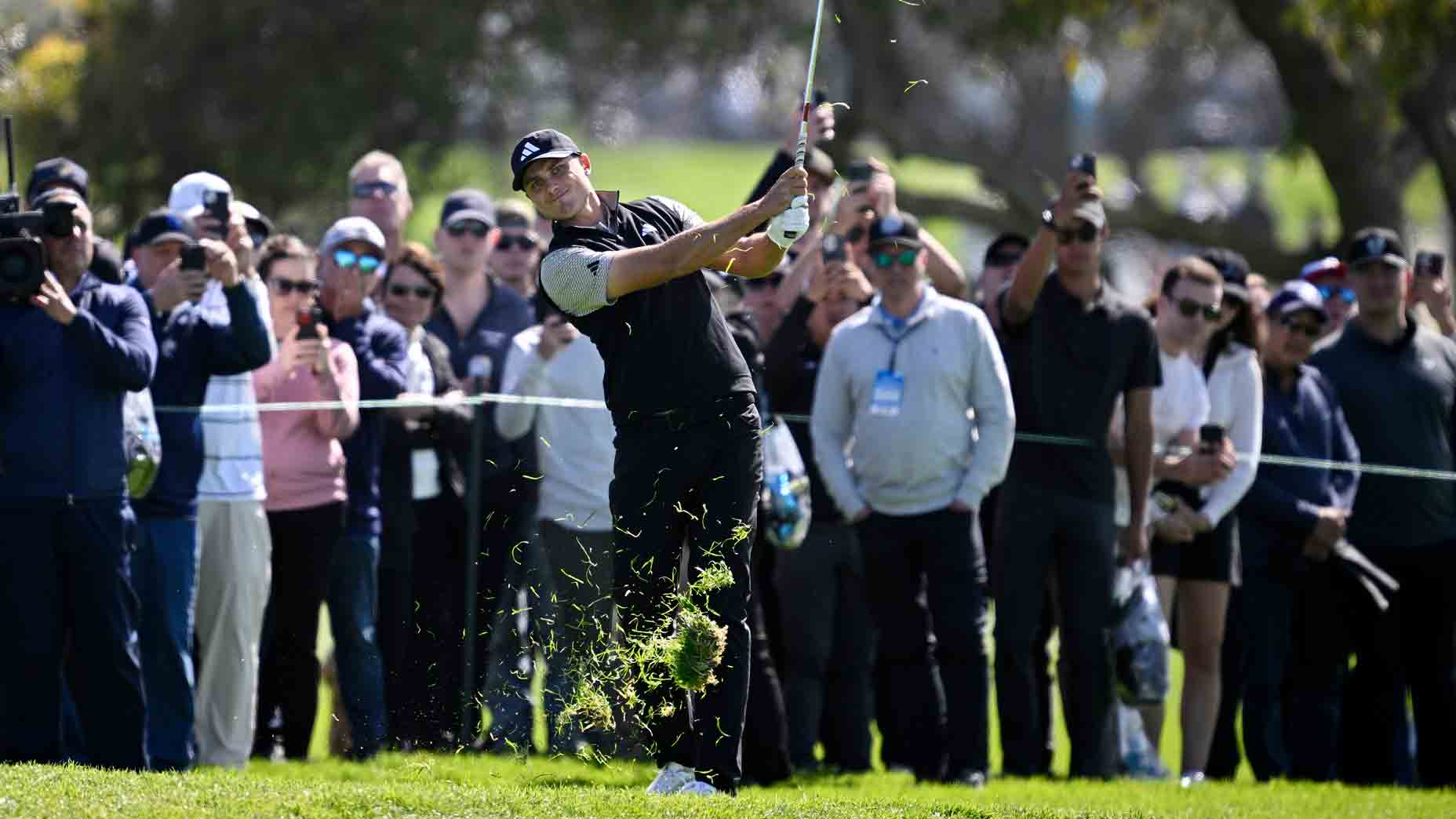PACIFIC PALISADES, Calif. — There’s a logical argument — often made in golf’s nonconformist circles — that par, those governing integers that define each hole of stroke play, is insignificant, bordering on irrelevant. What actually matters is the sum of strokes made over all 18 holes, and if you really must press, how that sum relates to the average score that day.
Golf’s freest spirits live this way. There are good 4s and bad 4s. But the Tour broadcast? It needs par to do the storytelling right. But if you — You is who we care about! — can get down with this Bohemian ideology, then this is your week: no course on the PGA Tour is more apt at telling that story than Riviera Country Club and its 1st hole.
From one of the most famous tee boxes on Tour, players look out over the 1st and see a straight-away fairway, a mini barranca cutting across around 320 yards, with about a 7-iron approach to a big green. Hit it, add two putts and you’ve got a birdie in hand. Simple as that. It’s when players write down a four with a circle around it that they enter the debate. Should this 503-yard par-5 actually be a par 4?
2022 Genesis Invitational: How to watch, TV schedule, streaming, tee timesBy: Kevin Cunningham
Over the last five years, No. 1 at Riviera has been the 2nd-easiest hole on Tour. That’s 2nd-easiest of about 800 or 900, annually, and that is, of course, according to par. Scoring average: 4.28. If tournament organizers elected for some chaos and instead listed it as a par 4, it would suddenly rank among the 40 toughest. The balance is nice for this course, with the other 17 holes helping Riviera play as one of the toughest annual tests on the Tour. Scoring average: OVER par. But the 1st hole playing as it is presents a weird mindset adjustment. Make birdie? Okay, good. Make par? Get over it.
“Look, it’s definitely a more welcoming 1st hole to be able to hit a 3-wood off the tee, hopefully you hit an iron and make a birdie,” Collin Morikawa says. “But I think if you do think of it as a letdown, you’re already putting yourself behind.
“You might be losing strokes to the field, but it’s not like 2 is an automatic bogey. It’s not like there are no other holes out there that you can make birdie. Is it a very birdiable hole? Absolutely, and you have to be ready to start the round and not just slowly ease into it. It’s just the way golf is.”

Morikawa is either the perfect player to ask, or the worst. His 3.825 scoring average on No. 1 implies, yes, he’s carded more eagles (2) than pars (1) in his eight trips down the hill. That’s definitely among the best of his Tour colleagues, but not alarming in reality. The only scores that really happen are 3s, 4s, 5s and 6s. In essence it’s a par 4+. The last double bogey on the 1st hole of the Genesis Invitational was made 1,095 days ago, by Joaquin Niemann. He tossed a wedge into three feet with his third shot and then four-putted from there. It was hardly evidence off the hole’s tee-to-green difficulty.
2021: 4.279 scoring average, zero double bogeys.
2020: 4.324, zero doubles.
2019: 4.199, one double (easiest hole all season).
2018: 4.284, one double.
2017: 4.271, two doubles(!)
What’s rare about holes like this one is that there’s no other room for change other than the signage posted next to the tee box. Tiger Woods stated the obvious Wednesday when he said: “you can’t lengthen that tee shot, it’s not going anywhere. The clubhouse is in the same spot, the same road, the same cart path, same everything.”
He also called the tee shot for what it is: iconic. Everyone from Ben Hogan to Collin Morikawa to the 2040 Masters champion will hit that shot. And they’ll likely all make a bunch of birdies. So what do we do about it? Absolutely nothing at all.
The benefit of what Riviera presents in the face of all that niceness on 1 is plenty of near-half-pars littered throughout the course. Make your 4 on 1, the next hole plays comfortably .15 strokes over par. No. 3 plays .2 strokes over the number. There’s a delicate game of tug-of-war going on all throughout the course, where the value of a par becomes either an asset or a burden to work against with whatever you’ve got left.
The total par at this track should be top of mind. It’s 71. The average score at this course the last five years? 71.3. At the end of the day, if you’re beating that you’re doing great.











